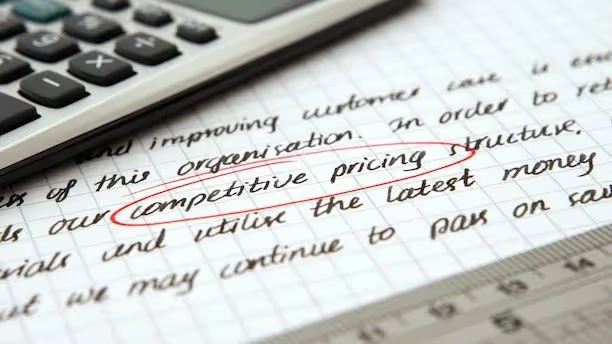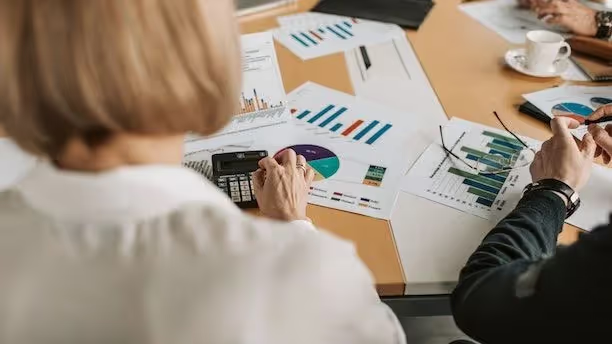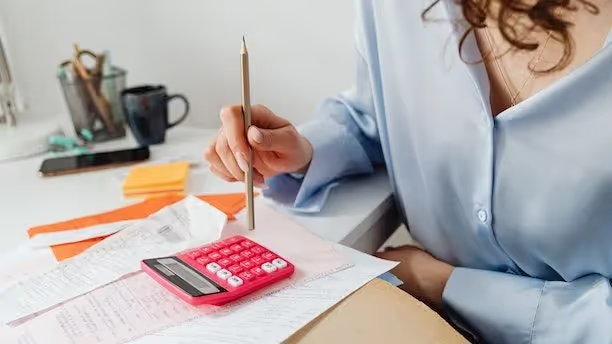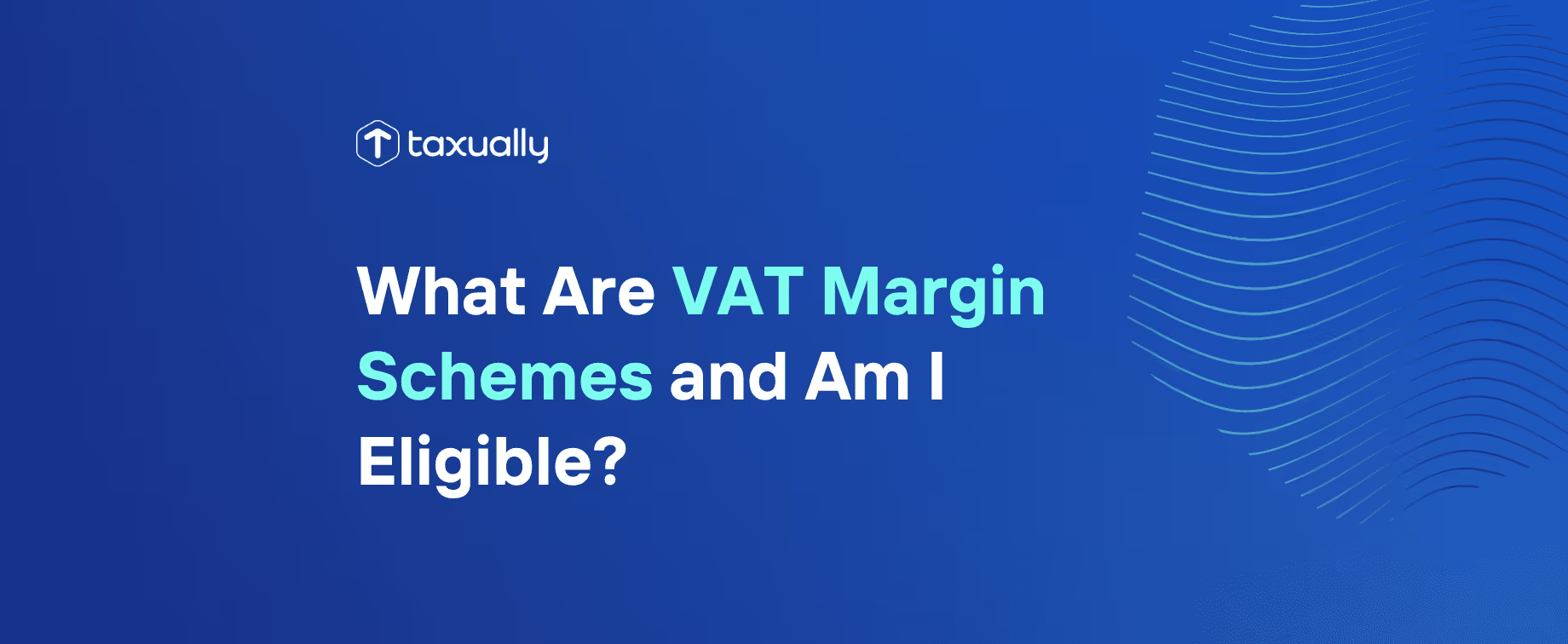Key takeaways
- Exploring VAT margin schemes involves understanding the mechanics of the scheme and its benefits.
- Businesses must register for VAT in order to be eligible, and maintain accurate records for a period of 6 years.
- The basic calculation method involves subtracting the purchase price from the selling price to determine the margin and applying the applicable fraction to calculate the VAT payable.
Do you find yourself confused by the concept of VAT margin schemes? You’re not alone. HMRC has a number of VAT schemes, and the margin scheme can be a game-changer for businesses dealing in second-hand goods, antiques, and collectors’ items, but hard to wrap your head around. In this comprehensive guide, we take a closer look at VAT margin schemes and explore the benefits they offer.
Exploring VAT margin schemes

A VAT margin scheme is a powerful tool that can significantly reduce the charged Value Added Tax burden on certain second-hand goods, as well as works of art, antiques, and collectors’ items. By taxing the difference between the purchase price and selling price of eligible goods, these schemes enable businesses to pay VAT more efficiently and maintain a competitive edge in the market. With the implementation of vat margin scheme taxes, businesses can further optimize their financial operations.
But how exactly do these schemes work? And what are the advantages of using them? Let’s break it down into two key aspects: the mechanics of a VAT margin scheme and the benefits they bring to businesses.
How VAT margin schemes work
VAT margin schemes are designed to simplify the calculation of VAT for businesses dealing in eligible goods. Instead of charging VAT on the full selling price of an item, these schemes tax the difference between the purchase price and the selling price, known as the margin. This margin is then multiplied by the VAT fraction (1/6 or 16.67%) to determine the VAT payable. The global accounting calculation method can be employed for clothing, furniture, books, and several other types of goods that fall under the categories of second-hand, antique, etc.
There are, however, certain exceptions and special cases within VAT margin schemes. For instance, second-hand cars have different rules, with the margin calculated and 16.67% VAT paid on the margin amount, subject to strict regulations. For collectors’ items, VAT is calculated by assuming that the profit made from the sale of eligible collectors’ items is inclusive of VAT and dividing the profit by 6, provided all conditions are met and indicated in the declaration.
Proper documentation, such as invoices and receipts, is crucial for filling out a VAT return, and any extra costs associated with the second-hand sale, like repairs or refurbishments, must be excluded when calculating the VAT margin.
Benefits of using a VAT margin scheme
Utilizing a VAT margin scheme can bring numerous benefits to businesses, including an improved profit margin. First and foremost, it reduces the total cost of sold goods by allowing businesses to pay a lower rate of VAT on the sale of second-hand goods. By simplifying VAT calculations and enabling businesses to compute VAT on the margin rather than the full selling price, these schemes also streamline the overall VAT process. In fact, using the vat margin can significantly contribute to a more efficient business operation.
As a result, businesses can maintain their competitive edge in the market by lowering the cost of goods and making their VAT computations more efficient. This makes VAT margin schemes an attractive option for businesses looking to optimize their operations and stay ahead in a competitive landscape.
Eligibility criteria for VAT margin schemes

Not all businesses and goods can take advantage of a VAT margin scheme. To participate, both businesses and the goods they sell must meet specific eligibility criteria.
In this section, we’ll take a closer look at the requirements that businesses and goods need to fulfill in order to be eligible for VAT margin schemes, guiding you through the process of determining whether your business and products qualify.
Businesses eligible for VAT margin schemes
To be eligible for the VAT margin scheme, businesses must register for VAT. Once they've done this, they are able to take advantage of the scheme. There’s no need for separate registration for the VAT margin scheme, but businesses should maintain accurate records, including a stock book and purchase and sales invoices. These records are crucial for reporting goods sold through the margin scheme on the business’s VAT return.
Goods eligible for VAT margin schemes
Only certain types of goods are eligible for a VAT margin scheme. As previously mentioned, these include second-hand goods, works of art, antiques, and collectors’ items. Goods must be acquired in a manner that meets the eligibility criteria for the respective VAT margin scheme, such as being purchased from a private individual or other VAT registered business using a margin scheme.
It’s important to remember that not all second-hand goods are eligible, and certain goods, such as livestock and alcoholic beverages, are excluded from VAT margin schemes.
Joining and implementing VAT margin schemes
Now that you have a clear understanding of the eligibility criteria for a VAT margin scheme, you might be wondering how to join and implement these schemes in your business. In this section, we’ll walk you through the process of joining and implementing a VAT margin scheme, ensuring that you have all the necessary information to start benefiting from these schemes right away.
Steps to join a VAT margin scheme
Joining a VAT margin scheme is a straightforward process. Since there’s no need to register separately for the scheme, businesses can start using a VAT margin scheme at any time by maintaining accurate records of the purchase and sale price of eligible goods, and reporting them on their VAT return.
Be sure to consult your accountant for advice before joining a VAT margin scheme so that you can be certain you’re making the best decision for your business.
Record-keeping for VAT margin schemes
Accurate record-keeping is crucial for businesses participating in a VAT margin scheme. To meet the record-keeping requirements, businesses must maintain a VAT margin scheme stock book to track each item sold under the scheme. In addition, the usual VAT records of all purchases and sales, copies of all issued invoices, and all invoices received must be kept for a period of no less than six years.
Proper documentation is essential not only to comply with the scheme’s requirements, but also to help businesses monitor their margins and make informed decisions about their sales strategies.
Cross-border sales and VAT margin schemes
The impact of VAT margin schemes isn’t limited to domestic sales; they also play a crucial role in cross-border transactions within the EU and outside the EU. In this section, we’ll explore how these schemes apply to cross-border sales and the unique considerations businesses need to take into account when dealing with international customers.
When selling to customers in other countries, businesses must be aware of the different VAT rules.
VAT margin scheme for EU sales
When it comes to cross-border sales within the European Union, the VAT margin scheme can be used to pay a reduced rate of VAT on goods sold to customers in other EU countries. To utilize a margin scheme for cross-border sales to private individuals in another EU country, businesses must register for VAT in the destination member state.
Reporting the sales and purchases made under the margin scheme to the relevant tax authorities is also required. Keep in mind that the margin scheme cannot be used for the transfer of second-hand goods between EU member states.
VAT margin scheme for non-EU sales
For businesses engaging in cross-border sales outside the EU, the VAT margin scheme can also be employed to pay a reduced rate of VAT on goods sold to customers in non-EU countries. This includes import and export considerations, where the VAT margin scheme can be utilized to reduce the amount of VAT due on goods imported into the EU and exported from the EU.
However, specific regulations apply to certain goods, such as motor vehicles, under the VAT margin scheme for non-EU sales, and compliance with these regulations is necessary to be eligible for the scheme.
Exceptions and special cases
While VAT margin schemes offer numerous benefits, there are certain goods and circumstances that are excluded from or have unique rules within these schemes. In this section, we’ll discuss the exceptions and special cases that businesses need to be aware of when dealing with a VAT margin scheme.
For example, goods that are subject to excise duty, such as alcohol and tobacco, are subject to full VAT.
Goods excluded from VAT margin schemes
Not all goods can be included in a VAT margin scheme. Items that cost more than £500 per item and goods that are not second-hand, works of art, antiques, collectors’ items, or precious stones are excluded from these schemes.
Livestock and certain second-hand goods, such as alcohol and tobacco products, are not eligible for VAT margin schemes.
Special circumstances in VAT margin schemes
There are unique rules and exceptions that apply to specific situations within VAT margin schemes. For instance, the margin scheme is facultative for second-hand goods, meaning that businesses can choose whether or not to use the scheme for these items. Additionally, businesses offering a high volume of qualifying items at a low cost may be eligible to use a simplified VAT margin scheme called the Global Accounting Scheme.
Being aware of these special circumstances allows businesses to make informed decisions and comply with the relevant regulations.
Calculating VAT using margin schemes

It’s essential to understand how to calculate VAT using these schemes. In this section, we’ll guide you through the basic calculation methods and provide examples to ensure you have a clear understanding of how to determine the VAT payable under a VAT margin scheme.
The calculation process is relatively straightforward and involves subtracting the VAT-inclusive purchase price from the calculation.
Basic calculation method
The fundamental method for calculating VAT using margin schemes involves subtracting the purchase price from the sales price to ascertain the margin, which represents the profit made on the sale of an item. Once the margin is determined, the VAT payable is calculated by applying the VAT fraction (1/6 or 16.67%) to the margin. This means that businesses pay VAT on the difference between the purchase and selling price, rather than the full selling price.
In the case of collectors’ items, the calculation is slightly different. VAT is calculated by assuming that the profit made from the sale of eligible collectors’ items is inclusive of VAT and dividing the profit by 6.
So whether you’re dealing in second-hand goods, works of art, antiques, or collectors’ items, understanding the basic calculation method is crucial for ensuring accurate VAT payments and compliance with VAT Margin Scheme regulations.
Examples of VAT margin scheme calculations
Let’s look at some practical examples to better understand how VAT margin scheme calculations work. Suppose a business purchases a second-hand item for £100 and sells it for £150. The margin in this case would be £50 (£150 - £100). To calculate the VAT payable, the business would multiply the margin by the VAT fraction (1/6), which equals £8.33 (£50 * 1/6).
In another example, consider a business paying VAT and selling an antique item purchased for £200 and sold for £250. The margin here would be £50 (£250 - £200), and the VAT payable would again be £8.33 (£50 * 1/6). These examples illustrate how the basic calculation method can be applied to different types of goods and sales scenarios, enabling businesses to accurately determine the VAT payable under a VAT margin scheme.
Conclusion
VAT margin schemes can be a powerful tool for businesses dealing in eligible goods. By offering reduced VAT rates, simplified calculations, and the ability to maintain a competitive edge in the market, these schemes greatly benefit businesses in various industries. However, understanding eligibility criteria, the implementation process, and calculation methods is crucial for businesses to fully benefit from these schemes and remain compliant with relevant regulations.
Do you need help with your VAT compliance? Book a free call with one of our VAT experts to find bespoke solutions for your business, optimize your VAT costs, and reach millions of new potential customers.
Frequently asked questions
New Year's Day - 1/1/2024Memorial Day - 5/27/20244th of July - 7/4/2024Labor Day - 9/2/2024Thanksgiving Day - 11/28/2024Day after Thanksgiving - 11/29/2024Christmas Eve - 12/24/2024Christmas Day - 12/25/2024
What is a VAT margin scheme?
A VAT margin scheme allows businesses to tax the difference between the purchase and selling price of certain items at a rate of 16.67%. This scheme is typically used when selling second-hand goods.
What is the VAT limit for margin scheme?
The VAT limit for the margin scheme is one-sixth of the difference between what you paid for an item and what you sold it for, which is equivalent to 16.67% of the selling price.
What are the four main VAT accounting schemes?
The four main VAT accounting schemes are the Cash Accounting Scheme, Flat Rate Scheme, Annual Accounting Scheme, and Margin Scheme. Each of these schemes has its own set of rules and regulations to be followed by businesses when dealing with VAT accounting.
What types of goods are eligible for VAT margin schemes?
Second-hand goods, works of art, antiques, and collectors’ items are eligible for a VAT margin scheme.
Under the scheme, the seller pays VAT on the difference between the purchase price and the selling price, rather than on the full selling price. This can be beneficial for both the seller and the buyer.
How do I calculate the VAT payable under a VAT margin scheme?
To calculate the VAT payable under the Margin Scheme, simply subtract the purchase price from the selling price to determine the margin, and then multiply that amount by the applicable VAT fraction (1/6 or 16.67%).
This is a straightforward calculation that can be done quickly and easily. It's important to remember that the Margin Scheme is only applicable to certain types of goods and services, so be sure to check the rules before applying the scheme.



















